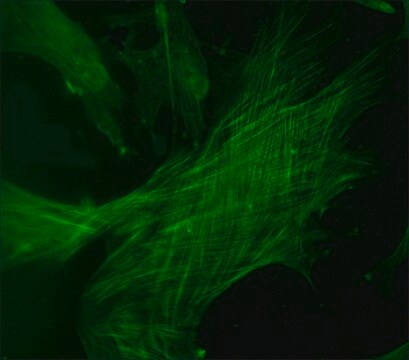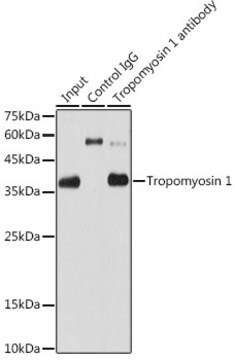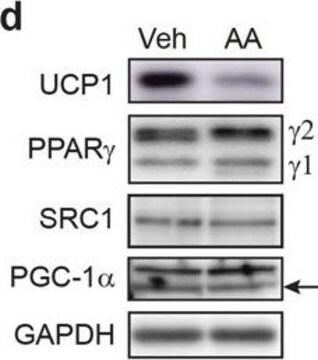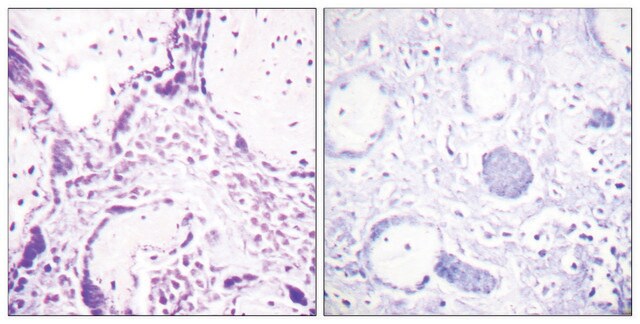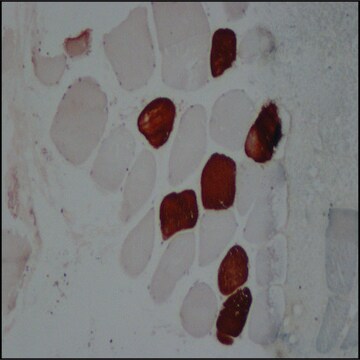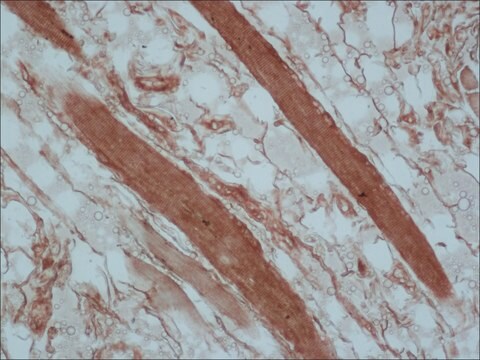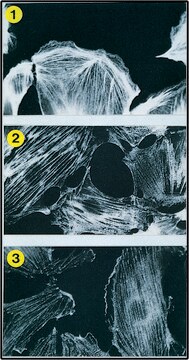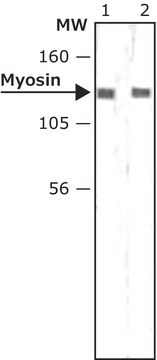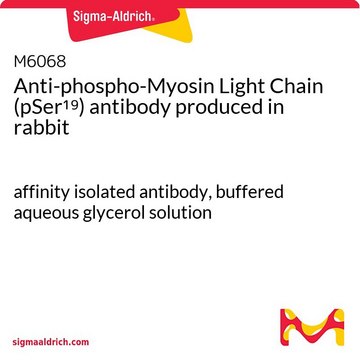おすすめの製品
由来生物
rabbit
品質水準
結合体
unconjugated
抗体製品の状態
IgG fraction of antiserum
抗体製品タイプ
primary antibodies
クローン
polyclonal
フォーム
buffered aqueous solution
分子量
33 kDa
交差性
human, rabbit, dog, rat, mouse, bovine
濃度
0.5 mg - 1 mg/mL
テクニック
immunohistochemistry: suitable
western blot: suitable
NCBIアクセッション番号
UniProtアクセッション番号
輸送温度
wet ice
保管温度
−20°C
ターゲットの翻訳後修飾
unmodified
遺伝子情報
human ... TPM2(7169)
詳細
TPM2 codes for beta-tropomyosin that belongs to the actin binding protein family. Mutations in TPM2 have been linked to congenital myopathies, Sheldon-Hall syndrome and cap disease.
Rabbit anti-TPM2 antibody recognizes canine, bovine, rabbit, zebrafish, chicken, human, mouse, and rat TPM2
Rabbit anti-TPM2 antibody recognizes canine, bovine, rabbit, zebrafish, chicken, human, mouse, and rat TPM2
免疫原
Synthetic peptide directed towards the C terminal region of human TPM2
アプリケーション
Rabbit anti-TPM2 antibodies have been used for immunoblot analysis. It is also suitable for IHC applications at a concentration of 4-8 μg/ml.
生物化学的/生理学的作用
TPM2 is beta-tropomyosin, an isoform of tropomyosin that is mainly expressed in slow, type 1 muscle fibers.The TPM2 gene encodes beta-tropomyosin, an isoform of tropomyosin that is mainly expressed in slow, type 1 muscle fibers (Tajsharghi et al., 2007 [PubMed 17846275]). See also TPM1 (MIM 191010), TPM3 (MIM 191030), and TPM4 (MIM 600317).[supplied by OMIM]. Publication Note: This RefSeq record includes a subset of the publications that are available for this gene. Please see the Entrez Gene record to access additional publications.
シーケンス
Synthetic peptide located within the following region: AETRAEFAERSVAKLEKTIDDLEDEVYAQKMKYKAISEELDNALNDITSL
物理的形状
Purified antibody supplied in 1x PBS buffer with 0.09% (w/v) sodium azide and 2% sucrose.
免責事項
Unless otherwise stated in our catalog or other company documentation accompanying the product(s), our products are intended for research use only and are not to be used for any other purpose, which includes but is not limited to, unauthorized commercial uses, in vitro diagnostic uses, ex vivo or in vivo therapeutic uses or any type of consumption or application to humans or animals.
適切な製品が見つかりませんか。
製品選択ツール.をお試しください
保管分類コード
10 - Combustible liquids
WGK
WGK 3
引火点(°F)
Not applicable
引火点(℃)
Not applicable
適用法令
試験研究用途を考慮した関連法令を主に挙げております。化学物質以外については、一部の情報のみ提供しています。 製品を安全かつ合法的に使用することは、使用者の義務です。最新情報により修正される場合があります。WEBの反映には時間を要することがあるため、適宜SDSをご参照ください。
Jan Code
AV48224-100UG:
AV48224-100UL:
最新バージョンのいずれかを選択してください:
Jung Min Ko et al.
Journal of Korean medical science, 28(5), 780-783 (2013-05-17)
Sheldon-Hall syndrome (SHS) is a rare autosomal dominant, inherited arthrogryposis syndrome characterized by multiple congenital contractures of the distal limbs. To date, four genes that encode the skeletal muscle fiber complex have been confirmed as the causative genes. Mutations in
Minttu Marttila et al.
Human mutation, 35(7), 779-790 (2014-04-03)
Mutations affecting skeletal muscle isoforms of the tropomyosin genes may cause nemaline myopathy, cap myopathy, core-rod myopathy, congenital fiber-type disproportion, distal arthrogryposes, and Escobar syndrome. We correlate the clinical picture of these diseases with novel (19) and previously reported (31)
Vilma-Lotta Lehtokari et al.
Neuromuscular disorders : NMD, 17(6), 433-442 (2007-04-17)
"Cap myopathy" or "cap disease" is a congenital myopathy characterised by cap-like structures at the periphery of muscle fibres, consisting of disarranged thin filaments with enlarged Z discs. Here we report a deletion in the beta-tropomyosin (TPM2) gene causing cap
Carole L Moncman et al.
Experimental cell research, 319(3), 23-31 (2012-11-24)
Extraocular muscles are a unique subset of striated muscles. During postnatal development, the extraocular muscles undergo a number of myosin isoform transitions that occur between postnatal day P10 (P10) and P15. These include: (1) loss of embryonic myosin from the
ライフサイエンス、有機合成、材料科学、クロマトグラフィー、分析など、あらゆる分野の研究に経験のあるメンバーがおります。.
製品に関するお問い合わせはこちら(テクニカルサービス)